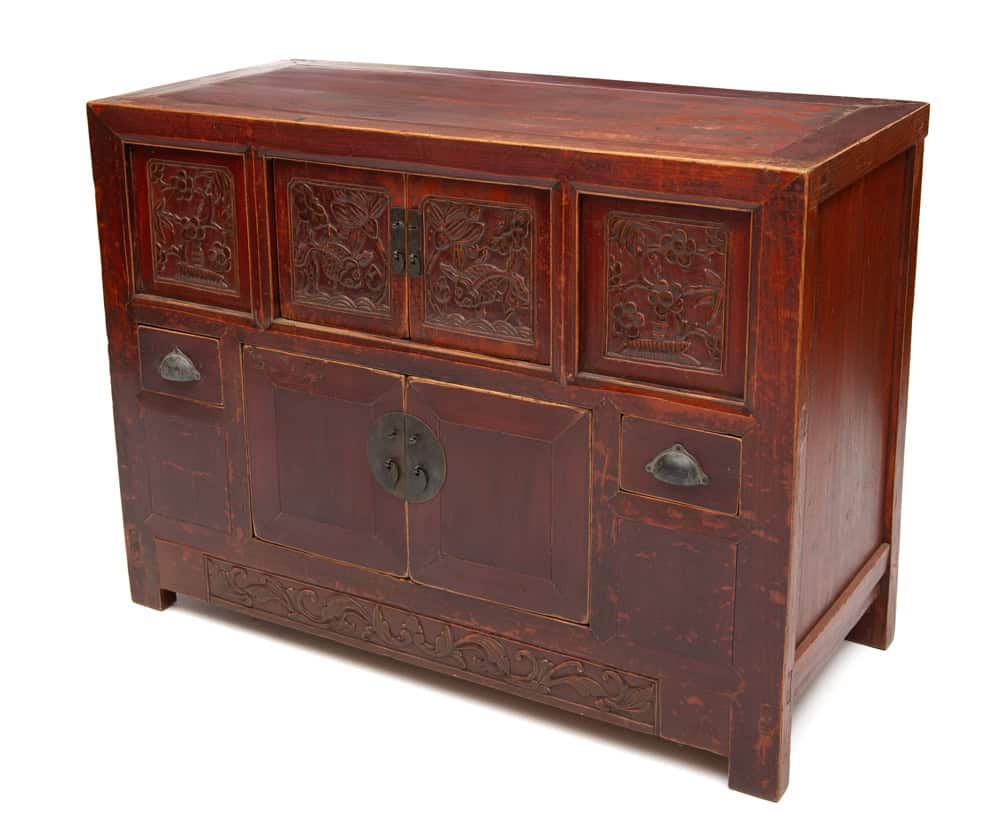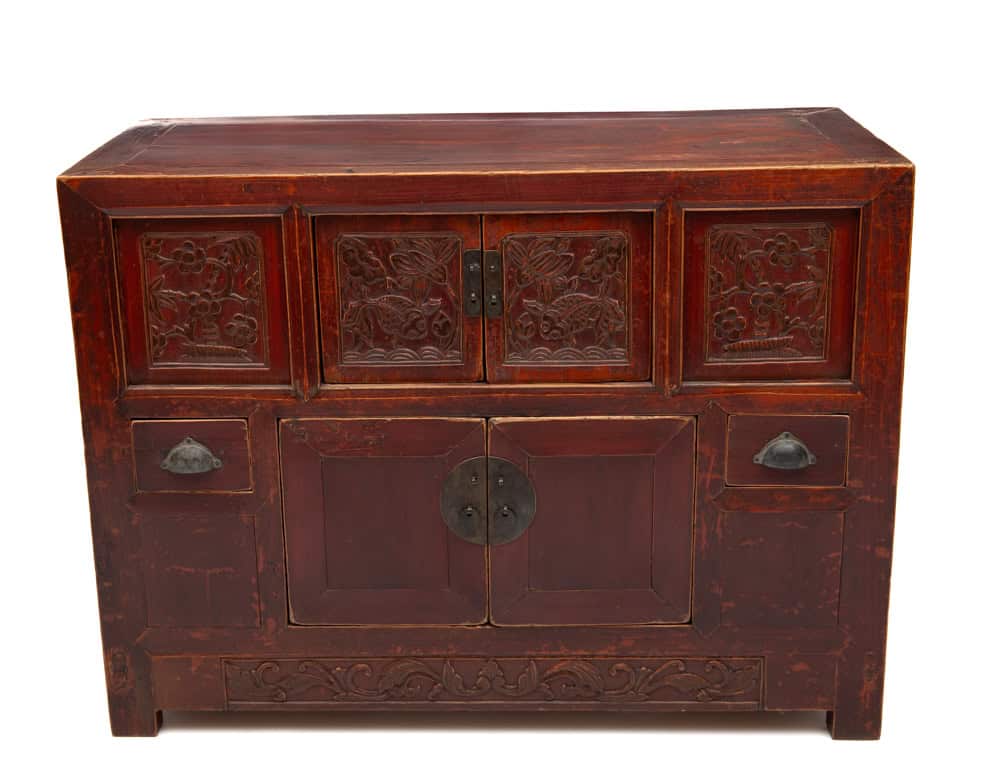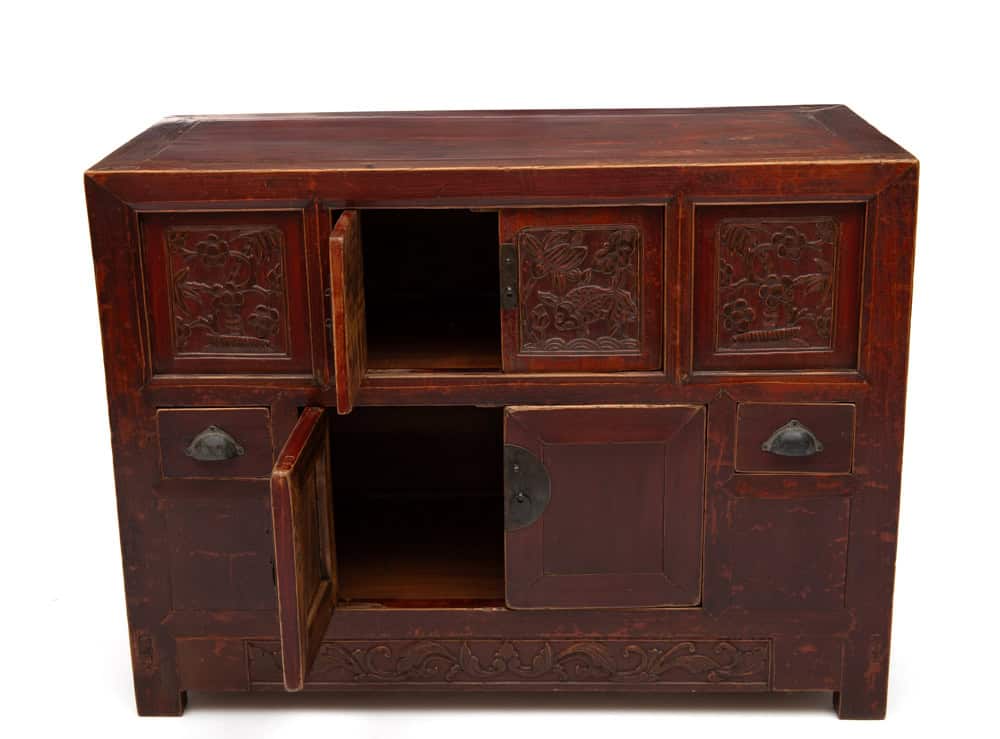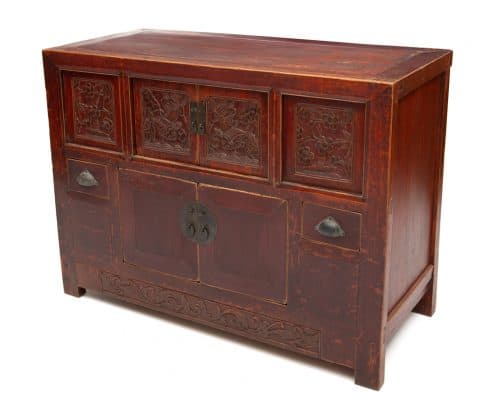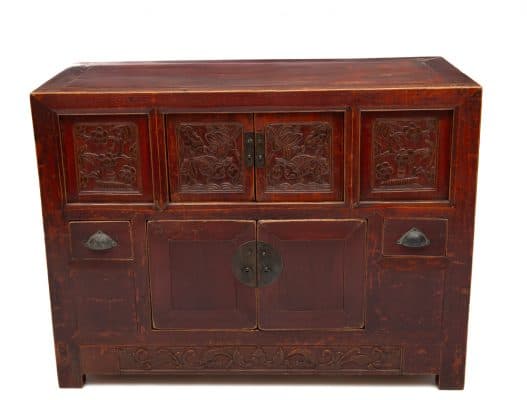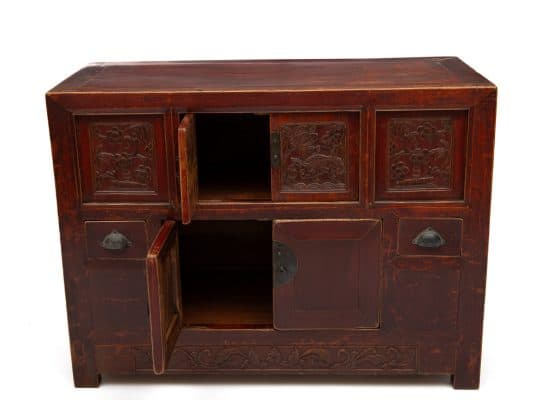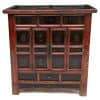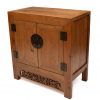Plum red lacquered cabinet with prosperity motifs
$2,500.00
Late 19th century
- elm
- 96cm W x 44cm D x 72cm H
The cabinet has relief carving of fish, a symbol of prosperity. The side panels depict plum blossoms, the petals represent the Five Blessings of happiness, good health, love of virtue, long life and a peaceful passing.
A shipping fee is calculated to deliver this item to the metropolitan areas of Brisbane, Sydney, Melbourne, Adelaide and Perth. Contact us to arrange a quote for delivery to other areas.
1 in stock
Make an EnquiryNote: Shipping of art is free in Australia

